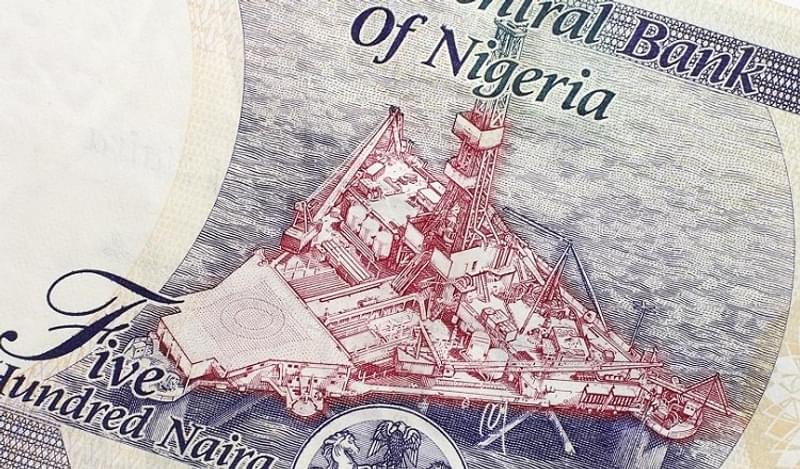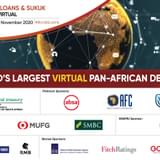In a report on the Nigerian banking sector, Moody’s noted that the country’s five largest lenders face common credit challenges as a result of a slowdown in the country’s economy following the fall in oil prices, which have collapsed from pre mid-2014 levels of over US$100 per barrel to around US$50 per barrel at present.
The lenders in question include Zenith Bank, Guaranty Trust Bank (GT Bank), Access Bank, United Bank for Africa (UBA) and First Bank of Nigeria (FBN).
Strained liquidity levels at these banks have been in the spotlight ever since the Central Bank of Nigeria (CBN) implemented the single treasury account, which consolidated a number of individual accounts from various government entities across the banking system.
Certain banks had earmarked their dollar deposits to pay letters of credit, and the single treasury account highlighted which banks had a dollar liquidity shortage to the point where they could not fulfil their obligations.
This dollar shortage cannot be easily resolved. Banks are facing problems in accessing dollars for two reasons. Firstly, the two largest providers of dollars to the country’s financial system, the CBN and oil companies, are no longer able to provide the quantity needed.
“Dollar inflows into the FX market have been relatively low. This used to trade at around US$300-400mn a day, but has fallen to around US$40mn a day, and on a bad day can even trade at as low as US$5mn,” said Joe Delvaux, senior fund manager – Duet Africa Credit Fund at Duet Asset Management.
Secondly, the depreciation of the naira has impacted access to dollars.
Although the naira is trading at around 315 to the dollar on the interbank market, it is trading at 470 to the dollar on the parallel market.
Despite such a high rate, demand has been pushed to the parallel market because dollars are not accessible in the interbank market.
“The parallel market is much further out than the interbank market because continued restrictions on the interbank market have pushed demand for foreign currency to the parallel market,” said Akin Majekodunmi, VP and senior analyst of the FI Group at Moody’s speaking to Bonds & Loans.
The problems that banks face from a lack of dollars could be compounded if the naira was to depreciate further.
In Tier 1 banks, foreign currency-denominated loans amount to around 45-50% of each entity’s total loan portfolio.
If the naira depreciated, banks’ capitalisation and asset quality would be affected.
Majekodunmi noted that if the naira was to fall to 350 to the dollar in the interbank market, bank capital is estimated to contract by around 10%.
“A depreciation of the currency would increase risk-weighted assets, which leads to shrinking capital adequacy ratios.”
However, if the naira depreciates further, it will overshoot, according to Delvaux – similarly to the Kazakh tengi and Russian rouble.
“Although this will create volatility in the short-term – in the long-term foreign investors would likely come back into Nigeria once the currency calmed,” he said.
Despite potential long-term gain from further depreciation, a fall in the naira would negatively impact non-performing loan ratios at Nigerian banks.
Delvaux noted that there has been a rise in the number of NPLs from the devaluation of the naira, as a result of the dollar-denominated loans advanced to oil companies who are struggling in the low oil price environment.
CBN figures in June this year showed NPLs at 11.7% of total loan assets, and Moody’s expects this to reach 12% over the next year. This is a substantial jump from the 5% that NPLs constituted in December 2015 according to CBN data.
However, the deterioration in asset quality had not manifested itself by the end of 2015, according to Majekodunmi. “There was a lag from when oil prices fell to when that fed into the current NPL figures. It was a big jump but it was expected.”
NPLs are mainly coming from the manufacturing and general commerce sectors, which are more import-dependent. These entities are struggling to source foreign currency – which means they have to source it in the parallel markets at an extreme premium. One third of total NPLs now originate from the general commerce sector.
NPL levels are unlikely to fall despite the announcement that Nigeria is close to launching its national development bank, the Development Bank of Nigeria (DBN).
Although the DBN will focus on lending to micro and small-to medium-sized enterprises (SMEs), it will not take any business away from commercial banks or shoulder their loan burdens. Within local lenders’ loan books, only around 5% is SME and retail based.
Nigerian banks are instead very corporate-focussed. In addition, they are actually very risk averse within their own markets – so are already unlikely to be lending to the sector in significant quantities.
The DBN could however clash with the Bank of Industry (BoI) despite the government stating that the former would not encroach on the latter’s operations.
It is understood that the BoI is looking to grow its SME portfolio, although this is still unlikely to lead to any crossover of lending operations between the DBN and BoI.
Although NPLs amongst commercial banks are unlikely to be alleviated by the DBN, certain banks within the sector remain in relatively strong shape given the wider economic environment.
This means that some, such as Access Bank (which is currently looking for a debt swap on US$350mn of its 2017s) are able to tap the markets, although Delvaux noted that the FX system means that it is still not easy even for stronger lenders to raise capital.
The large difference between certain banks is highlighted by the fact that Diamond Bank’s 2019 senior unsecured Eurobond was recently trading at 20.5% as opposed to Zenith Bank’s 2019s, which were trading at around 7%.
“Zenith is a large Tier 1 bank, whilst Diamond Bank is more a Tier 2 bank. The former is not perceived to have a large dollar stress, whilst the latter is perceived to have such stresses,” Delvaux said.
He added that for certain banks the bond market remains open, although they are likely to have to issue at higher yields in dollars than they would have had to in the past, whilst for other banks the dollar markets are completely shut.









